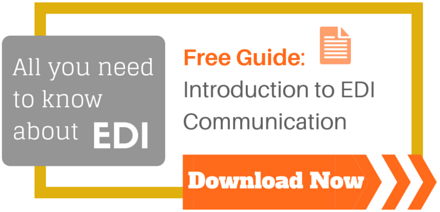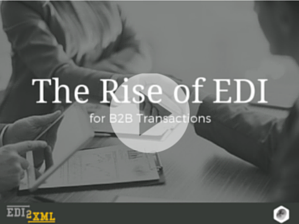Jul 2014
This post was updated to reflect current trends and information.
Should we migrate our EDI integration and processing platform to a SaaS EDI platform or instead, adopt an EDI translation software on-premises?
The above question is asked by many business executives when involved in EDI integration projects, either when a contract or license with their current EDI provider or translation software comes to an end or before signing for a new EDI business relationship with a new partner. All of these reasons are valid and lately, this topic of discussion is being brought up much more, simply due to the popularity of “cloud” enhanced capabilities and security and Software as a Service (SaaS).
More and more enterprises are working to improve their supply chain management, which leads to companies adopting software applications (as a service). This allows them to increase efficiency, provide higher availability, reduce costs and increase profitability.
Today’s article will address the points every business owner should be evaluating when looking for an answer to the above question.
Enterprise IT Governance & Policy
The first thing to look at before making a decision on whether to go with SaaS EDI or to adopt an EDI translation software, is the company’s policy and IT governance, i.e. the rules and procedures that govern technological implementations and processes. What is the policy and general rule to implement software systems (including EDI)? What are the security measures and privacy rules?
Most companies of different sizes establish strict IT governance rules and procedures and follow these guidelines as much as possible. From my own observations, I have noticed that many enterprises, that have more than 20M of revenues per year and that use enterprise software such as JDE or SAP, have strict rules stating that they can only deploy software solutions on their own premises. However, today we are seeing more of these enterprises going for cloud and SaaS offerings, as it fits their needs much better.
EDI Volume
The second important point to look at is the volume of EDI data you wish to exchange with your business partner (or the current volume if you are already on EDI). This will give a good indication as to what direction your company should be leaning towards. In my professional opinion, the volume of EDI transactions is not the only factor when deciding to convert to SaaS EDI or to adopt translation software, but it is an important parameter.
Point-to-point EDI or VAN
The third point is to look at statistics about EDI connectivity with your current EDI partners, or forecast them if you are new to the EDI world. In today’s digital world, most EDI transactions are going point-to-point between business partners in a very secured manner using the Internet pipeline and secured protocols such as AS2, sFTP, FTP, etc. There are less transactions going through a VAN in comparison to a few years ago, as VANs charge additional expenses for EDI connectivity, which can add up and become quite costly.
Current IT Architecture & Team
A company’s IT architecture and team are extremely important when making decisions about EDI integration and implementation. If the company decides against the SaaS EDI model, does it have all the necessary hardware infrastructures, connectivity protocols and security to internally handle all kinds of EDI processing? Is the IT team equipped to handle such a project? Do they have the expertise and know-how to implement, manage and monitor EDI processes, transactions and translations? If the answers to the above questions are ‘no’, then the enterprise is better off with the SaaS EDI model.
EDI Translation Software Licensing
Don’t forget to evaluate the EDI translation software itself, from cost to functionalities to yearly maintenance and support to the ongoing development and programming during and after the implementation phase. It is also important to evaluate the capability of the IT team working with the EDI translation software.
Read: Take this QUIZ: Is your business cut out for on-premises EDI software?
SaaS EDI Service Provider
Whether using the services of a provider under the SaaS model or on-premises, it is crucial to select the right service provider for EDI. SaaS EDI providers should have a lot of experience in not only EDI but also in EDI and systems’ integration. In addition, the turnaround and customer service and support for that provider are key points for a decision. Keep in mind that some major SaaS EDI providers only see your business as an opportunity to increase revenue and stock value instead of focusing on giving a personalized and amazing customer service.
Conclusion: SaaS EDI or EDI Translation Software?
We are aware that the selection process and choice between SaaS EDI and EDI translation software is a challenging one. We believe that by having the right mechanism and people in place, enterprises of any size can make educated decisions based on what’s best for their business.
If you need more information or help in determining which model you should go with, please contact our EDI team for a free consultation.










